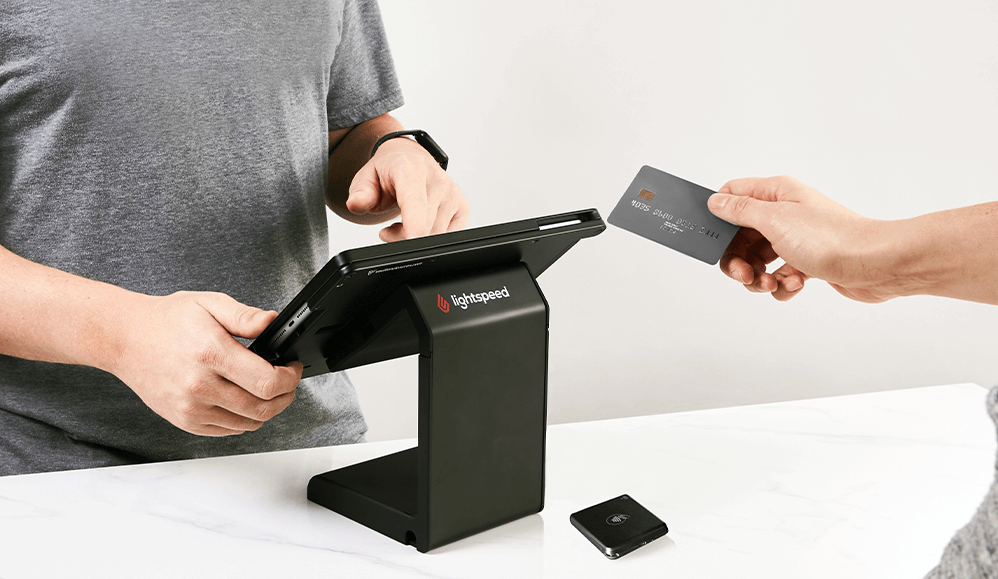
Retail businesses have had to rethink the way their customers consume their goods and services, almost overnight. New consumer behaviors formed by restrictions such as physical distancing have had astounding implications on how retailers operate. The impact of COVID-19 and quarantine has profoundly accelerated the use of contactless payments, for example. While it’s a technology that has been around for years, it has become essential to the ways people seek to limit contact with frequently touched physical devices such as terminals and keypads.
The colossal shift to all things contactless and digital has pushed retailers to redesign the experience they offer their customers, increasing the shopper’s comfort level amid heightened health concerns and beyond. And as the economy gradually re-opens its doors, whether buying rituals will go back to the way they once were remains uncertain.
What is certain is that companies will have to adjust to overcome this hurdle. A business that wants to thrive during unprecedented times like these will want to deepen its connection with its customers. In creating experiences where customers leave the store or e-commerce platform feeling satisfied, the likelihood of returning becomes a lot higher.
Providing contactless experiences
Somewhere along the customer’s buying journey is an experience that promotes growth within the retailer-shopper relationship. The journey consists of a series of touchpoints that make buying for today’s consumers easier. Only companies that understand what makes a customer satisfied will be the ones able to implement an effective customer experience strategy that will make the visit worth repeating. And with that outcome as the goal, retailers are figuring out methods to eliminate customer pain points and provide lasting impressions with the help of technology.
One way they’re achieving this is through contactless payments for frictionless checkout processes, both in-store and curbside. Technology companies like Lightspeed offer intuitive POS (point-of-sale) systems for retail businesses looking to reinvent themselves with solutions that sell to more customers online and off. And they are making transactions smarter with mobile payments that enable contactless experiences with just an iPad and Bluetooth connectivity. With increased mobility, sales staff can accept payments from anywhere in the store and cut down long lines, so customers don’t have to wait.
Going contactless also means having an online presence so shoppers can browse and purchase items directly from the store without ever leaving the house. E-commerce solutions are opening up new revenue streams by targeting these potential customers looking for comfort and convenience.
Connecting the contactless experience
Being in more places at once is also critical to the contactless success story. Retailers are selling their products on multiple channels and can provide unified experiences across all of them.
This omnichannel strategy helps create more satisfied customers by offering a seamless shopping experience that will keep them keep coming back. Designed to connect all of the dots, online and off, these cloud-based POS systems are helping businesses expand into new markets with sophisticated e-commerce software. The software allows retailers to sync and organize inventory from throughout brick-and-mortar stores and offer the personalized experiences that customers expect.
For today’s retailer, providing a unified experience consistently throughout the buyer’s journey by connecting the pieces — starting from the browsing stage, through the buying stage and even at the end of the receiving stage — is crucial to survival.
COVID and the contactless world
Adjusting to all the changes brought on by the pandemic has been no easy feat for the retail industry, regardless of a company’s size. The demand for contactless payment options and digital avenues to purchase goods and services has forced retailers out of their comfort zones. The truth of the matter is, the contactless experience is no longer just a “nice-to-have” but a necessity that impacts the retailer’s bottom line.
This new normal has taught us that a business’s survival is contingent upon two very important things: Its ability to eliminate customer pain points and its willingness to understand that lasting impressions mean everything.
Offering customers contactless payment options in the physical store helps them avoid touching unsanitary cash or terminals (i.e., a pain point) while expediting the checkout process, so they aren’t forced to wait in long lines (an unwanted lasting impression). Businesses currently using POS systems to facilitate their customers’ journeys at every touchpoint recognize that the goal is to use the technology to create personalized experiences that educate, engage and inspire customers in a memorable way that will bring them back repeatedly.
More from Digiday

The Disney-OpenAI deal and generative AI copyright concerns
This week’s Digiday Podcast delves into the copyright concerns and potential trademark issues surrounding brands’ use of generative AI tools, with Davis Wright Tremaine partner Rob Driscoll.

Why Pinterest wants to buy tvScientific, and what it signals for the CTV ads business
Corporate development sources estimate the deal valuation to be above $300 million, claiming tvScientific’s gross revenue is approximately $100 million.

Ad Tech Briefing: How the experts predict digital ad spend will pan out in 2026
Advertisers are placing greater emphasis on price and performance, often at the expense of transparency and control.





